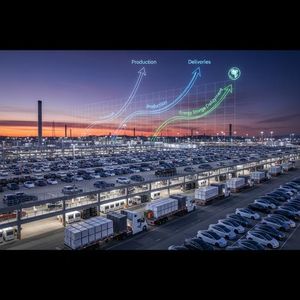For decades, the United States prided itself as the world’s education superpower—a nation where a college degree was the golden ticket and public schools were the envy of many. But as the summer of 2025 draws to a close, a flurry of new data and firsthand stories reveals a much more complicated, even troubling, reality. The American education system is facing crises on multiple fronts: declining student achievement, persistent inequities, eroding public trust in higher education, and a global race for talent that the U.S. can no longer assume it’s winning.
At the heart of the current debate is a paradox. On paper, there have never been more teachers per student in U.S. schools. According to K-12 Dive, by 2022 the student-teacher ratio dropped to its lowest point in modern history—from 16.4 students per teacher in 2010 to just 15.4. In fact, 43 states and the District of Columbia now have fewer students per teacher than before the COVID-19 pandemic. Yet, as federal pandemic aid expires and student enrollment declines, districts are making painful choices: consolidating schools, laying off staff, and freezing hiring. “Because some districts chose to hire despite declining enrollment, they are laying off staff or implementing hiring freezes,” Marguerite Roza, director of Georgetown University’s Edunomics Lab, told K-12 Dive.
The so-called “teacher shortage,” then, is less a matter of sheer numbers and more a crisis of distribution and subject expertise. Stanford professor Thomas Dee explained, “There are many more teachers per students than ever before in US history.” But the problem, he argues, is that the shortages persist in the places and subjects that matter most—rural districts, high-poverty schools, and hard-to-staff fields like STEM and special education. Take Arizona’s Deer Valley Unified School District: even as enrollment shrank by 1.5% and about 50 positions were cut between 2021 and 2023, science and special education jobs remained stubbornly unfilled. “We’re at the tip of the educational experiment,” said Superintendent Curtis Finch, referring to Arizona’s expansive school choice program.
Some districts are fighting back with creative solutions. Deer Valley USD’s “grow-your-own” teacher prep program, which trains local graduates to become certified teachers, has seen 95% of its 160 participants remain in the district. But experts caution that such successes are rare and not a panacea. The real crisis, Dee says, is about equity: “The issue is hard-to-staff schools and hard-to-staff subjects.” The students who need the most help are often the least likely to get it.
Zoom out, and the picture only gets grimmer. Educational attainment in U.S. schools has been declining since the mid-2010s and plunged further during the pandemic, with no sign of recovery. The U.S. National Center for Education Statistics (NCES) reported that in 2024, the reading ability of 13-year-olds fell to a level last seen in 1994—comparable to the 1970s. In Cleveland, Ohio, one of America’s most deprived cities, the crisis is acute: the Cleveland Metro Schools District saw the steepest falls in reading and math scores among all major U.S. cities since the pandemic. Despite finally meeting state standards last year, more than half of its schools remain below the bar.
It’s not just children who are struggling. The Program for the International Assessment of Adult Competencies (PIAAC) found that in 2023, 28% of American adults scored at or below the lowest level of reading proficiency, up sharply from 19% in 2017. Numeracy and problem-solving skills also lag, with U.S. adults ranking 25th out of 31 nations for numeracy and 22nd for literacy. “Even if it’s only half as bad as those test scores suggest, it’s unbelievably terrible. It’s hard to overstate how bad it is,” Nat Malkus, deputy director of education studies at the American Enterprise Institute, told The Telegraph.
The causes are complex and hotly debated. Some point to chronic underfunding, a fragmented system with no national curriculum, or the toll of broader socio-economic problems. Others eye technology—especially the rise of smartphones and social media—as a culprit. Cleveland’s schools have responded by banning phones in classrooms, a policy that led to a 25% drop in behavioral incidents and hopes for even greater academic gains. “Not only are they distractions to academic performance, they were also putting kids at risk from bullying and the impact on their mental health,” said Michele Pomerantz, Cleveland’s chief of education.
But the crisis is not just about test scores or classroom management—it’s about the nation’s future. Stanford economist Eric Hanushek estimated that students affected by pandemic disruptions could lose as much as 6% of their lifetime earnings, with a staggering $31 trillion cost to U.S. GDP over the 21st century. The gap between top and bottom performers in the U.S. is growing faster than anywhere else in the world, threatening to bifurcate society and undermine economic mobility.
Higher education, once the surest path to opportunity, is facing its own reckoning. As Deseret Magazine reports in its September 2025 issue, enrollment is down and public trust is eroding. The crisis is threefold: cost, relevance, and meaning. Economist Beth Akers calls it the “ROI problem”—the growing gap between what students pay for college and the real-world value of their degrees. “With better data, clearer expectations and stronger financial literacy, students can still make smart, future-oriented choices,” Akers argues.
Meanwhile, education leaders like Clark G. Gilbert and David A. Hoag urge colleges to reclaim their role as moral communities, places that foster not just intellectual growth but spiritual and ethical development. “Learning with purpose” and “the courage to believe” are more than slogans—they’re a call to restore higher education’s deeper mission. Ted Mitchell and Derrick Anderson, writing for Deseret Magazine, add that colleges must evolve to better align with the demands of today’s workforce, defending their civic and democratic roles while embracing necessary reforms.
Globally, America’s educational standing is slipping. Once home to over 40% of the world’s university-educated workers in 1950, the U.S. share dropped to 16% by 2022 and is projected to fall to 10% by 2040. China, by contrast, has made massive gains, investing heavily in science, technology, engineering, and math (STEM) education and building a vast pool of skilled workers. As Nicholas Eberstadt of AEI put it, “The wealth of nations really is nowadays in human resources, not in natural resources.”
The stakes could not be higher. As philanthropic leaders like Ken Griffin warn, “If we don’t fight for our children to have a better education, we’re going to fall behind the world in a very profound way.” The future of American innovation, prosperity, and even national security may hinge on whether the country can reverse its educational decline and ensure that opportunity is not just a slogan, but a lived reality for all.
For now, the stories of individuals like Laverne Wright—a Cleveland stock keeper whose literacy journey began anew in adulthood—offer a glimmer of hope. “I’m growing and I’m getting my ability,” she says. But for the nation as a whole, the path forward will require urgent action, honest reckoning, and a renewed commitment to the promise of education.





